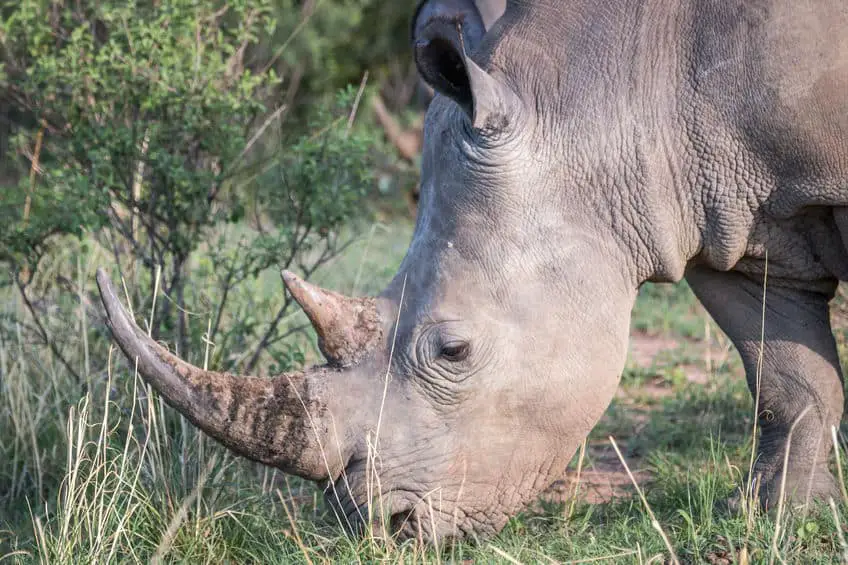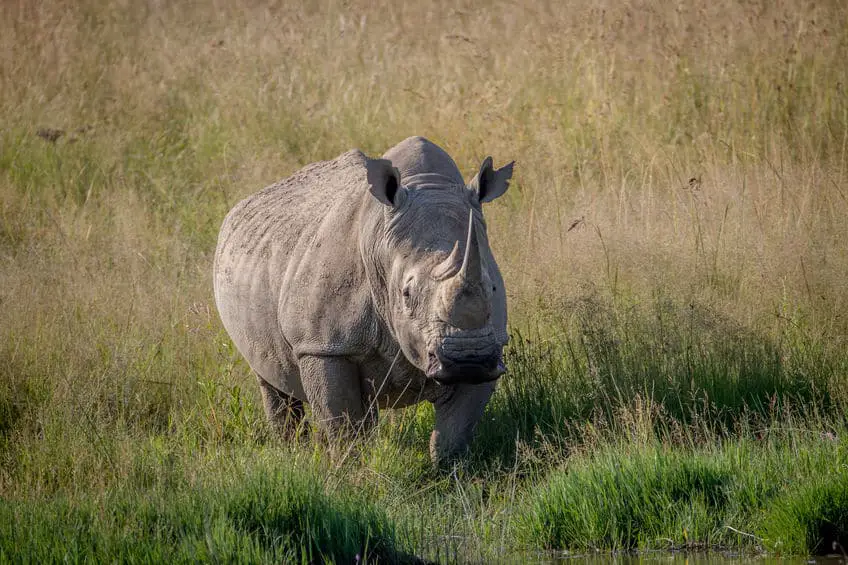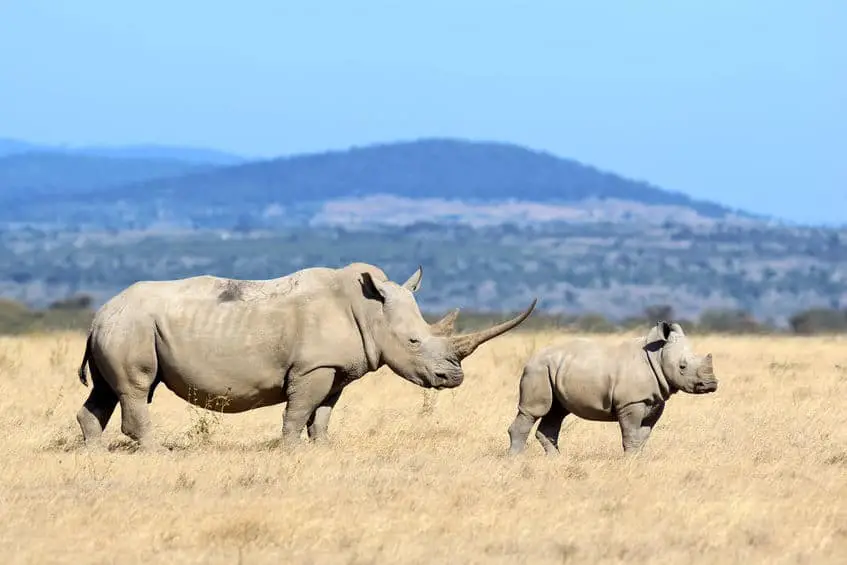
Searching for an African rhinoceros can be a challenging task as there is plenty of land and habitat to search through. Lucky for you, I have done some research about what type of habitat the two types of African rhinoceros (black rhinoceros and white rhinoceros) can be found in and where in Africa to go look for them.
African rhinoceroses are found in sub-Saharan Africa. Their natural habitat ranges from tropical and subtropical grasslands to savannas, shrublands, tropical moist forests, and deserts. Both white rhinoceros and black rhinoceros are found in South Africa, Namibia, Kenya, and Zimbabwe.
At the beginning of the 20th century, about half a million rhinos roamed Africa and Asia. Today, around 27.000 rhinos are left in the wild so unfortunately, they are becoming a rare sight. Below are some facts about the types of habitat rhinoceros are found in and some tricks to help spot them as well as some other interesting facts.
The Two Types of African Rhinoceros and Their Habitat
The two types of African rhinoceros, the black rhinoceros and the white rhinoceros can be found in various types of habitats ranging from topical and subtropical grasslands, savannas and shrublands to tropical moist forests and deserts.
Both the black rhinoceros and the white rhinoceros are native to sub-Saharan Africa.
The primary natural habitat depends on the species of rhinoceros. For instance, the white rhinoceros is primarily found in open savannas and the black rhino is more often found in deserts and grasslands.

White Rhinoceros. The Animal Kingdoms Version of a Tank
The white rhinoceros is an armored giant. The males can weigh as much as 2000-3600 kg. which is as much as a fully grown female African elephant. The female white rhinoceroses are slightly smaller (but still very large), weighing as much as 1400-2000 kg.
White rhinoceros measure 3.4-4 meters in length (males are slightly larger than females) and up to 1.80 meters in height by their shoulders.
The expected lifespan of white rhinoceroses is between 40-50 years.
The white rhinoceros has a 20-30 cm. wide mouth which is the ideal tool for picking and eating grass which is its primary source of food and nutrients.
The white rhinoceros’ primary habitat is open savannas which provide the grass they eat as well as water holes, mud puddles, and shade from trees.
There are actually two subspecies of white rhinoceros. A northern and a southern subspecies.
Unfortunately, the last male of the northern subspecies died in 2018 and there are now only two females left. So in order to see white rhinoceros in the wild, you should go to the southern or eastern parts of Africa where they are found in South Africa, Namibia, Zimbabwe, Kenya, and Uganda.

Black Rhinoceros. Small and Aggressive
The black rhinoceros is critically endangered and therefore an extremely rare sight.
They used to be widely distributed in sub-Saharan Africa except in rainforests and the driest deserts. Now, they are almost exclusively found in protected areas such as national parks.
The most significant black rhino populations are found in South Africa, Namibia, Kenya, and Zimbabwe.
The menu for the black rhinoceros is broader than that of the white rhinoceros. The black rhino eats up to 100-200 different types of plants and can actually eat some poisonous and thorny plants such as acacias which make up a large part of the menu.
Black rhinos can go for 5 days without water in the desert by eating succulents which contain a lot of water.
The optimal natural habitat for the black rhinoceros seems to consist of thick scrub and bushland, often with some woodland but they can also be found in savanna and even deserts.
Where to See Rhinoceros in Africa
There are two subspecies of white rhinoceros in Africa. The northern white rhinoceros and the southern white rhinoceros. The southern subspecies is categorized as “Near Threatened” and the northern as “Critically Endangered” so they are both rare but more common in the south.
The white rhinoceros can be seen in South Africa, Namibia, Zimbabwe, Kenya, and Uganda. It mostly stays in open savannas since these provide the grass that makes up the majority of the food for the white rhinoceros.
The black rhinoceros is categorized as critically endangered and is a very rare sight. They used to be widely distributed south of Sahara but are now almost only found in protected areas such as national parks.
Most black rhinos are found in South Africa, Namibia, Kenya, and Zimbabwe.
I myself have never been fortunate enough to see a black rhinoceros in Africa but I have had plenty of luck with the white ones.
The first time I saw white rhinos in the wild was in the Etosha National Park in the northern part of Namibia. Since then, I have visited Kruger National Park in South Africa where I have seen many of them, especially in the southern and central parts of the park.

How Many Rhinos Are Left in the Wild in Africa?
As i wrote earlier in this post, both white and black rhinoceros used to be distributed all over sub-Saharan Africa in much higher numbers than they are now.
At the beginning of the 20th century, about half a million rhinos roamed Africa and Asia, and now, not much more than 100 years later, only around 27.000 rhinos are left in the wild.
The quick decline in the number of rhinos in the wild is largely caused by loss of habitat but unfortunately also to a large degree a result of poaching.
The most intensive hunt for rhinos took place in the 1960s when the international trade with rhinoceros horns was thriving but rhinos in Africa were already having a hard time in the 1800s when they were systematically killed due to their habitat being used for agriculture and big game hunting.
In 2010, there were around 20.000 southern white rhinoceros left but since then, the number of poachers has unfortunately exploded so the exact number of white rhinoceroses left in the wild is unknown.
Black rhinoceros is critically endangered. A study from 2010 estimated that a total of only 5000 black rhinos were left in the wild. This species of rhinoceros is only found in protected areas such as national parks with the exception of Damaraland in north-western Namibia.
